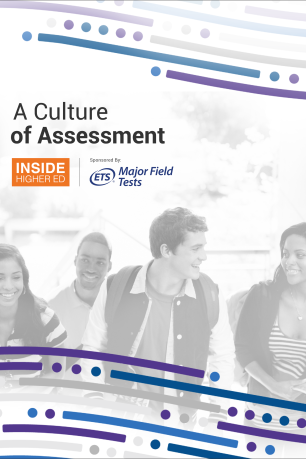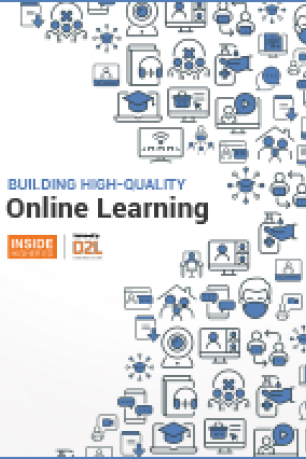Free Download
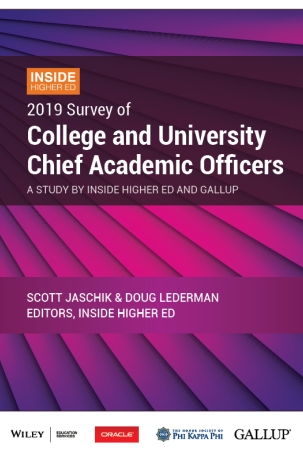
Nearly half (46 percent) of provosts of American colleges and universities report that at least one faculty member at their institution has faced allegations of sexual harassment in the last year. The percentage was highest (90 percent) at public doctoral institutions and lower in other sectors.
The results are from the 2019 Inside Higher Ed Survey of Chief Academic Officers, conducted by Gallup and answered by 475 provosts or chief academic officers. This is the first time the annual survey of provosts included a series of questions related to the Me Too movement as it has become a force in higher education. The results indicate that provosts (as has been the case on many issues on which college administrators are surveyed) are more confident that their own institutions handle these issues correctly than they are of higher education as a whole.
The survey, released today as many provosts and other academic leaders head to Atlanta for the annual meeting of the Association of American Colleges & Universities, comes at a time of intense pressure on chief academic officers. Other highlights of the survey:
- Most provosts are skeptical of the way some colleges have eliminated departments based on low numbers of majors.
- More than three-quarters (78 percent) of provosts believe that colleges are prioritizing technology and professional programs over those that support general education.
About the Survey
Inside Higher Ed’s 2019 Survey of College and University Chief Academic Officers was conducted in conjunction with researchers from Gallup. Inside Higher Ed regularly surveys key higher ed professionals on a range of topics.
On Thursday, Feb. 21, at 2 p.m. Eastern, Inside Higher Ed will present a free webcast to discuss the results of the survey. Register for the webcast here.
The Inside Higher Ed Survey of College and University Chief Academic Officers was made possible in part with support from Wiley, Oracle, Phi Kappa Phi and Gallup.
- 90 percent of provosts believe that high-quality undergraduate education requires healthy departments in traditional liberal arts fields such as English, history and political science.
- A majority of provosts are concerned about the impact of cuts to academic programs in higher education, and at their institutions.
- Only 31 percent of provosts believe that their students understand the purpose of general education requirements.
- Most provosts report pressure from presidents, boards and deans to focus on academic programs outside of the liberal arts.
- Provosts -- more than faculty members -- are willing to make changes in the way textbooks are selected to save students money.
- A majority of provosts believe that students feel comfortable in classrooms, but some doubt whether this is the case for minority and conservative students.
Me Too
 The Me Too movement initially drew attention to harassment endemic in the entertainment industry, but it found no shortage of harassment in academe as well, with students and faculty members (especially graduate students and junior professors) reporting that senior academic colleagues had harassed them. In many cases, complaints concerned patterns of behavior -- sometimes widely known at institutions -- in which the abuses of power by prominent professors were tolerated for years. And as in the entertainment industry, many of the victims felt powerless to bring charges against people who could make or break their careers.
The Me Too movement initially drew attention to harassment endemic in the entertainment industry, but it found no shortage of harassment in academe as well, with students and faculty members (especially graduate students and junior professors) reporting that senior academic colleagues had harassed them. In many cases, complaints concerned patterns of behavior -- sometimes widely known at institutions -- in which the abuses of power by prominent professors were tolerated for years. And as in the entertainment industry, many of the victims felt powerless to bring charges against people who could make or break their careers.
More than two-thirds of provosts (69 percent) agreed that "higher education has tolerated sexual harassment by faculty members for far too long." More than a third (36 percent) strongly agreed with the statement, with the strongly agreeing view most likely to be held by those at doctoral institutions. (Among all the provosts who responded to the survey, 48 percent were women.)
But asked about their own institutions, only 13 percent agreed that their colleges and universities had tolerated sexual harassment by faculty members for far too long. Six percent strongly agreed with that statement, with provosts at public doctoral institutions most likely (11 percent) to strongly agree. Some of the most prominent cases of harassment findings in academe have been found at research universities (with some of those cases involving graduate students), and many fit the pattern in which punishments were not viewed as harsh enough.
On the issue of punishment, provosts strongly agreed that a finding of harassment by a tenured professor should be grounds for dismissal. But only a minority agree that such findings should be made public. The lack of publicity of findings has led some advocates for women in academe to circulate lists of those found to have engaged in harassment.
Provosts on Punishing Faculty Harassers and Publicity
| Public | Private | |
| Finding of harassment is grounds for dismissal of tenured professor | ||
| --% strongly agreeing | 67% | 71% |
| --% agreeing but not strongly | 21% | 18% |
| Findings of harassment by professor should be made public | ||
| --% strongly agreeing | 16% | 12% |
| --% agreeing but not strongly | 25% | 18% |
Many colleges have responded to concerns about sexual harassment by faculty members by banning romantic relationships between students and faculty members. Some institutions adopted such bans years ago, but many others have moved to do so in the last year, and some are still considering such measures. While some of these measures are blanket bans, others apply only to undergraduates or to relationships between professors and graduate students they supervise in some way. In some cases, violating these rules is viewed as grounds for dismissal. In December, Catholic University fired a tenured professor for having a sexual relationship with a graduate student whom he hired as an assistant.
On this issue, 80 percent of provosts agree that colleges should ban romantic relationships between professors and students. Results were consistent across sectors. Only 58 percent, however, said that their college currently bars such relationships.
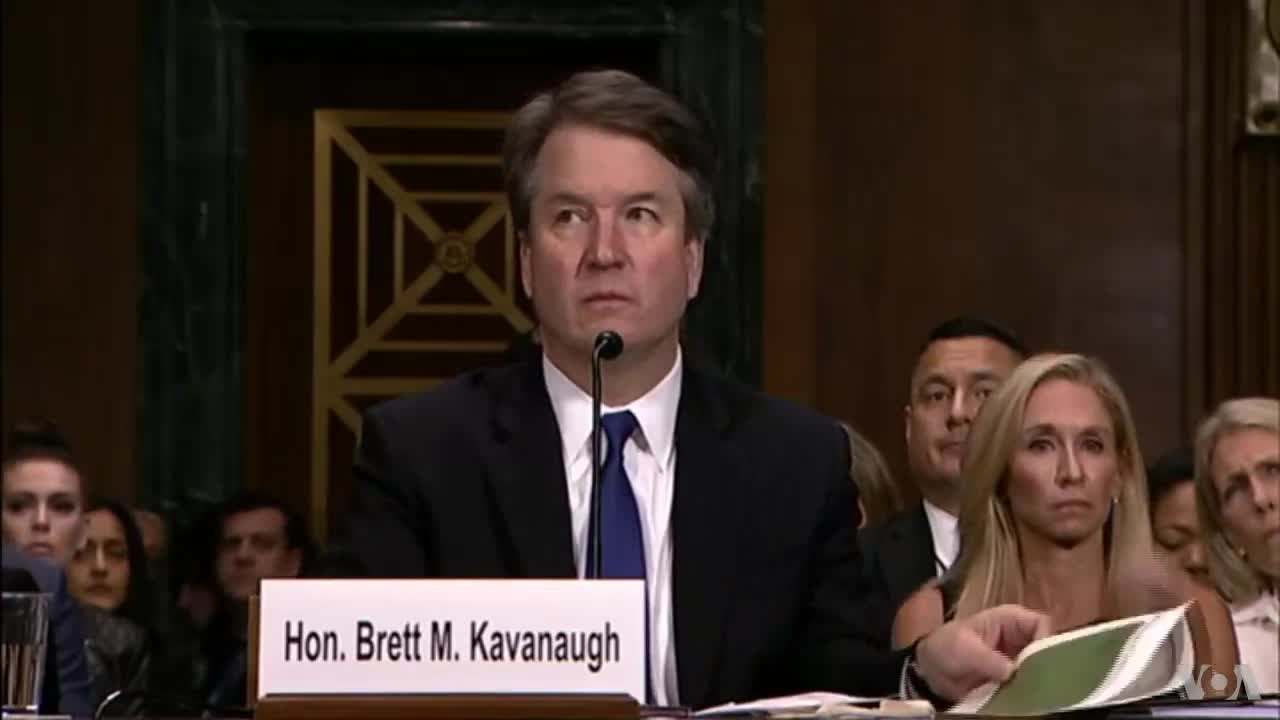 While chief academic officers see their institutions taking the issue of sexual harassment seriously, a majority are concerned that the country could be seeing a backlash against taking these issues seriously. Asked if they are concerned about a backlash against colleges' efforts in the wake of the debate over the nomination of Brett Kavanaugh to the U.S. Supreme Court, 28 percent said they were very concerned, and 31 percent said they were somewhat concerned.
While chief academic officers see their institutions taking the issue of sexual harassment seriously, a majority are concerned that the country could be seeing a backlash against taking these issues seriously. Asked if they are concerned about a backlash against colleges' efforts in the wake of the debate over the nomination of Brett Kavanaugh to the U.S. Supreme Court, 28 percent said they were very concerned, and 31 percent said they were somewhat concerned.
Liberal Arts, Cuts and Gen Ed
Many provosts have found themselves on the front lines of campus debates over financial struggles of institutions and whether certain academic programs should be cut. Deep cuts to liberal arts programs at the University of Wisconsin at Stevens Point and elsewhere have prompted much concern among academic leaders about whether essential parts of a college education are being sacrificed.
"In recent years, the disciplines of the liberal arts, once universally regarded as central to the intellectual life of the university, have been steadily moved to the periphery and increasingly threatened -- by some administrators, elected officials, journalists, and parents of college-age children," said a statement issued in June by the AAC&U and the American Association of University Professors. "The study of the history of human societies and forms of human expression is now too often construed as frivolous, and several colleges and universities have recently announced the wholesale elimination of liberal arts departments."
 Provosts in the survey expressed considerable concern about these trends.
Provosts in the survey expressed considerable concern about these trends.
Only 29 percent said that the number of majors in a given department is an appropriate way to determine which departments to cut. Low numbers of majors have been cited by numerous colleges as a rationale for eliminating programs -- despite opposition from others who say that liberal arts departments' contributions may extend well beyond those who major in a given field.
Provosts (who were given anonymity in this survey) took positions similar to those of faculty members in many campus battles over proposed eliminations and shrinking of liberal arts departments. More than three-quarters (78 percent) of provosts believe that colleges are prioritizing science, technology and professional programs over those that support general education. And 90 percent of provosts believe that high-quality undergraduate education requires healthy departments in fields such as English, history and political science. These views crossed sector lines.
A series of questions asked the provosts for their views on cuts to academic departments. More than a third of provosts (37 percent) reported that their colleges had cut departments or programs in the last two years, but provosts at community colleges were more likely (46 percent) to report cuts at their institutions.
Here are answers from the provosts about their views of the cuts -- in higher education and at their colleges.
Provosts on Cuts
| Public | Private | |
| How concerned are you about cuts in majors and departments in higher education generally? | ||
| --% very concerned | 24% | 28% |
| --% somewhat concerned | 46% | 50% |
| How concerned are you about cuts in majors and programs at your college? | ||
| --% very concerned | 18% | 19% |
| --% somewhat concerned | 37% | 35% |
One reason many academics defend liberal arts programs with relatively small numbers of majors is the role of the programs in general education. In light of this argument, this year's survey included a series of questions about the importance and health of general education.
On these questions, provosts generally indicated that they placed a high value on general education, and most believe that their faculty members care about teaching general education courses. But weaknesses in general education also were identified. Relatively few provosts thought their students understood the role of general education requirements. The results also show that not all colleges have recently evaluated the effectiveness of their general education program.
Provosts on General Education Issues: Agreement on 1-5 Scale
| Statement | 1 (strongly disagree) | 2 | 3 | 4 | 5 (strongly agree) |
| General education is a crucial part of any college degree. | <1% | 2% | 6% | 30% | 63% |
| My college recently evaluated the effectiveness of our general education requirements. | 4% | 15% | 20% | 33% | 28% |
| Students at my college understand the purpose of our general education requirements. | 4% | 25% | 40% | 26% | 5% |
| Faculty members at my college are enthusiastic about teaching courses that are part of general education requirements. | 1% | 8% | 23% | 46% | 22% |
| Students at my college emerge from general education with sufficient writing skills. | 4% | 14% | 35% | 40% | 7% |
| General education requirements have become too expansive. | 17% | 30% | 23% | 21% | 10% |
In a few areas, there were clear differences by sector. While 22 percent of provosts over all said that their faculty members were enthusiastic about teaching general education courses, that figure dropped to 3 percent at public doctoral institutions, and 11 percent at private doctoral/master's institutions.
Where Will the Money Go? An Improving Picture for Arts and Sciences
For several years, this survey has asked provosts which areas they anticipate will receive major new allocations in the next year. And for each year that the question has been asked, provosts have predicted that STEM, professional and online programs would be higher priorities than would be arts and sciences programs. (Of course, some programs fall in more than one of these categories, and provosts were not limited in the number they could project for increases.) This year, that pattern remained, but the share expecting increases in arts and sciences program hit a record high. (The latest year of the survey shown below is 2018.)
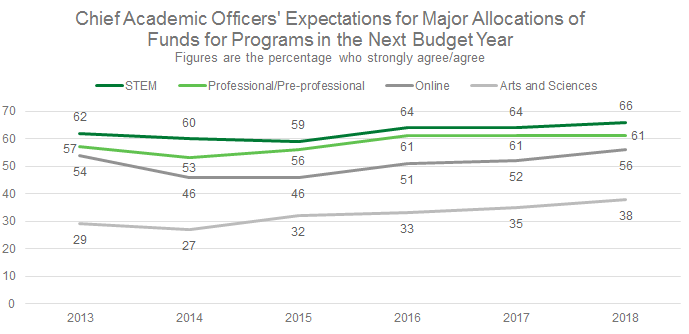
Despite that change, many provosts are pessimistic about liberal arts education (both at liberal arts colleges and at institutions with broader missions). The provosts see great value in liberal arts education, but their answers to various questions suggest that they feel intense pressure to focus elsewhere. At the same time, the provosts note potential weaknesses in liberal arts education. A significant minority (and nearly half of those at community colleges) say that liberal arts education has become too divorced from the career needs of students and graduates. And a significant minority of provosts question the commitment of faculty members to helping students with career preparation.
Provosts' Attitudes on Liberal Arts Education
| Statement | % of Private College Provosts Agreeing | % at Public Institutions | % at Community Colleges |
| Liberal arts education is central to undergraduate education, even in professional programs. | 94% | 88% | 85% |
| Liberal arts education at all types of institutions in the U.S. is in decline. | 43% | 32% | 38% |
| Liberal arts education has become too divorced from the career needs of students and graduates. | 25% | 43% | 46% |
| Politicians, presidents and boards are increasingly unsympathetic to liberal arts education. | 65% | 60% | 55% |
| I feel pressure from my president, board or donors to focus on academic programs that have a clear orientation toward careers. | 51% | 61% | 63% |
| My institution is increasing attention on the ability of our degree programs to help students get a good job. | 77% | 91% | 93% |
| Liberal arts faculty members are not sufficiently interested in the desire of parents and students for career preparation. | 38% | 36% | 33% |
| I expect to see the number of liberal arts colleges decline significantly over the next five years. | 53% | 57% | 59% |
| The concept of a liberal arts education is not well understood in the United States. | 89% | 81% | 76% |
Academic Health and Effectiveness
Other topics on which provosts are surveyed regularly by Inside Higher Ed are the academic health of their institutions (defined as provosts would like to define the term) and institutional effectiveness in various categories. This year, a smaller share of provosts than in the past rated their institution's academic heath as "excellent," although the share saying that the health was "good" increased. Only 1 percent saw their institutions as having poor academic health.
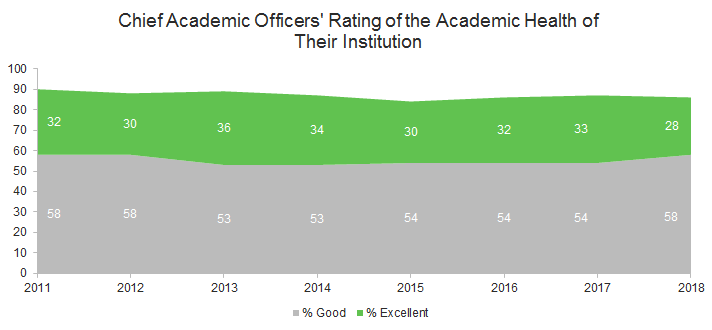
When asked about the quality of undergraduate education they provide, provosts generally give their institutions good grades in general terms. However, the provosts are less likely to rate their institutions as very effective on specific objectives as they are on the general question.
% of Provosts Who Rate Their Institutions Very Effective in …
| Private Colleges | Public Colleges | Community Colleges | |
| Providing a quality undergraduate education | 60% | 54% | 55% |
| Preparing students for the world of work | 43% | 41% | 45% |
| Offering undergraduate support services | 43% | 38% | 38% |
| Recruiting and retaining talented faculty | 35% | 22% | 20% |
| Identifying and assessing student outcomes | 22% | 25% | 24% |
| Using data to aid and inform campus decision making | 16% | 19% | 19% |
| Controlling rising prices for students and their families. | 16% | 38% | 38% |
Assessment
As in past years, provosts see assessment as a key tool to improving student outcomes. But provosts' answers show some awareness of common criticisms of faculty members: that assessment systems add to their reporting work and don't necessarily lead to improvements in the educational experience.
Close to half of provosts (48 percent) said that assessment has "improved the quality of teaching and learning at my college." While that falls short of a majority, only 16 percent disagreed.
Nearly one-third of provosts (32 percent) agreed with the statement that "my college's use of assessment is more about keeping accreditors and politicians happy than it is about teaching and learning." Nearly three-quarters (73 percent) of provosts said that faculty members view assessment as requiring a lot of work on their parts.
Textbooks
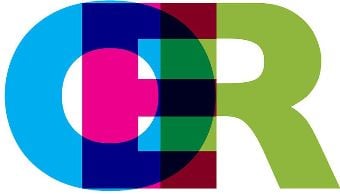 In recent years, amid concerns about the high cost of paying for college, the issue of textbook costs has captured more and more attention. These days textbooks, particularly in the health professions and at community colleges, can in some cases cost more than tuition. Also in recent years, new models, at much lower costs to students, have emerged. Open educational resources, or OER, are free online, openly licensed materials available for use. And traditional publishers have turned to new models for selling textbooks, such as inclusive access, in which digital curricular materials are sold at a flat fee for a course or for a semester's worth of materials.
In recent years, amid concerns about the high cost of paying for college, the issue of textbook costs has captured more and more attention. These days textbooks, particularly in the health professions and at community colleges, can in some cases cost more than tuition. Also in recent years, new models, at much lower costs to students, have emerged. Open educational resources, or OER, are free online, openly licensed materials available for use. And traditional publishers have turned to new models for selling textbooks, such as inclusive access, in which digital curricular materials are sold at a flat fee for a course or for a semester's worth of materials.
Provosts have increasingly shown openness to these new models, but -- in general -- those at public institutions are more willing to consider these models than are those at private institutions. A clear majority of provosts at public institutions (58 percent) said they agreed that OER materials "are of sufficiently high quality that they should be used in most general education courses." That figure was only 37 percent at private institutions.
A majority of provosts at public institutions (51 percent, with the total rising to 55 percent at community colleges) agreed with the statement that the need to help students save money on textbooks justifies some loss of faculty member control over the materials they use in courses. At private colleges, the figure is 36 percent.
Inside Higher Ed has been asking questions on this topic of faculty members in other surveys, such as an annual survey of faculty members on technology issues. Here, there are clear differences that emerge in the perspectives of faculty members and provosts. Following are two questions asked of both groups:
Provosts vs. Faculty Members on Key Issues Related to Textbook Costs
| Provosts | Faculty Members | |
| Faculty members should be open to changing textbooks and other materials to save students money, even if the lower-cost materials are of lesser quality | ||
| --% Strongly agree/agree | 37% | 32% |
| --% Strongly disagree/disagree | 37% | 49% |
| The need to help students save money on textbooks justifies some loss of faculty member control over selection of materials for the courses they teach | ||
| --% Strongly agree/agree | 46% | 21% |
| --% Strongly disagree/disagree | 34% | 60% |
Another issue on which some public/private disagreement is evident is competency-based education. Here as well, provosts at public institutions are more favorably inclined than are those at private institutions (87 percent to 66 percent). But while private college leaders seemed hostile to the idea a few years ago (even though a number of pioneers in competency-based education are private institutions), they now appear merely to be less enthusiastic than their public counterparts.
Provosts are on the front lines over many debates about inclusiveness in higher education. A particular point of contention has been whether students of all groups feel welcome in classrooms. A majority of provosts, across sectors, believe that students do feel welcome. But the level of agreement is strongest for white and liberal students, and is weaker for others.
Provosts on Students Feeling Welcome in Classrooms: Agreement on 1-5 Scale
| Statement | 1 (strongly disagree) | 2 | 3 | 4 | 5 (strongly agree) |
| White students generally feel welcome in classrooms on my campus. | 0% | <1% | 7% | 40% | 53% |
| Liberal students generally feel welcome in classrooms on my campus. | <1% | 3% | 14% | 54% | 29% |
| Racial and ethnic minority students generally feel welcome in classrooms on my campus. | <1% | 8% | 29% | 42% | 20% |
| Conservative students generally feel welcome in classrooms on my campus. | 2% | 10% | 25% | 42% | 20% |
The Job of Provost
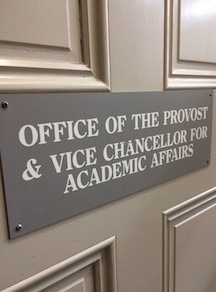 In discussions at gatherings of provosts, a major issue in recent years has been the nature of their job. Some complain that, amid financial constraints, the job has become too focused on budgets, without enough attention to the academic issues that a chief academic officer would hope to address.
In discussions at gatherings of provosts, a major issue in recent years has been the nature of their job. Some complain that, amid financial constraints, the job has become too focused on budgets, without enough attention to the academic issues that a chief academic officer would hope to address.
More provosts disagree (42 percent) than agree (27 percent) that their job is focused more on financial issues than on academic ones. The 27 percent who agree their job is more focused on financial issues than academic ones is down from 34 percent a year ago and 38 percent in 2016. Private baccalaureate academic officers are the one group more inclined to say their job focuses more on financial issues than academic ones; 40 percent agree and 31 percent disagree this is the case.
Chief academic officers tend to agree with the idea that there is a fundamental difference in perspective between administrators and faculty members -- 51 percent strongly agree or agree while 22 percent strongly disagree or disagree.
The vast majority of provosts, 84 percent, agree they are glad they pursued administrative work. A majority of 54 percent strongly agree, including no less than 51 percent for provosts at any type of institution.





